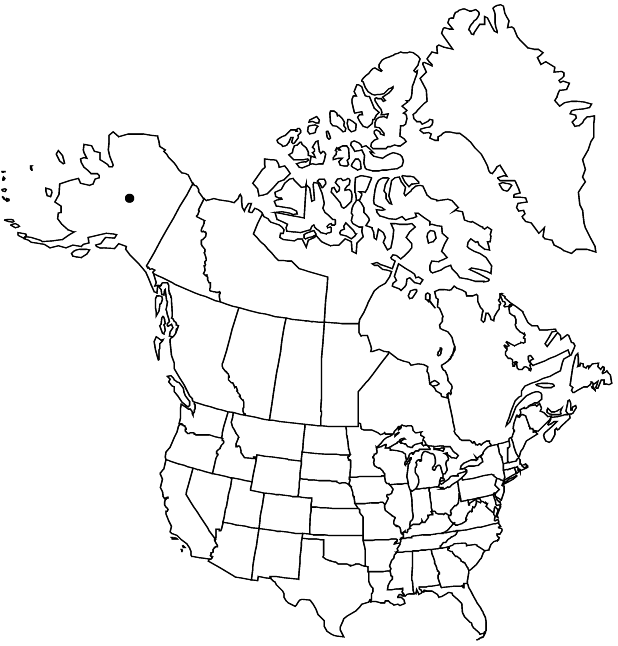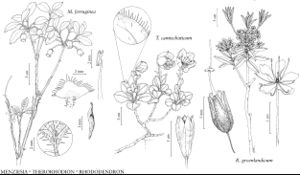Therorhodion camtschaticum
in N. L. Britton et al., N. Amer. Fl. 29: 45. 1914 ,.
Shrubs usually to 2 dm. Stems multicellular, eglandular-hairy (hairs unbranched), sometimes also stipitate-glandular-hairy, glabrate with age. Leaves often clustered toward distal portions of shoots; blade elliptic to obovate, 1–4.5 (–6) × 0.7–2.4 cm, thin, margins ciliate (hairs eglandular), plane, apex rounded to obtuse or acute, mucronate, surfaces usually eglandular-hairy, sometimes sparsely glandular-hairy. Floral bud-scales (and leaflike inflorescence bracts) eglandular-hairy, sometimes also stipitate-glandular-hairy. Inflorescences 2–3-flowered, sometimes flowers solitary; axis elongate. Pedicels 1–4.7 cm, eglandular and/or stipitate-glandular-hairy; bracteoles 2, green, smaller than leaves. Flowers opening after shoot development, appearing to terminate leafy shoots due to their leaflike bracts; calyx lobes 8–21 mm, eglandular and/or stipitate-glandular-hairy; corolla purple to, rarely, white, upper 3 lobes with darker spots, 19–32 mm, margins ciliolate, unicellular-hairy on outer surface, tube ± absent due to slit between lower 2 lobes, lobes 12–26 mm; stamens unicellular-hairy proximally. Capsules 6–11 mm, unicellular-hairy. 2n = 24, 26.
Phenology: Flowering summer.
Habitat: Arctic and alpine tundra and heathlands, meadows, and subalpine woods
Elevation: 0-1500 m
Distribution

Alaska, e Asia (Japan), e Asia (Russian Far East)
Discussion
Therorhodion camtschaticum is found in the coastal and southern insular regions.
Selected References
None.
Lower Taxa
No values specified."/3" is not declared as a valid unit of measurement for this property.
